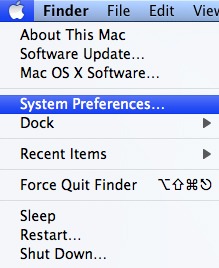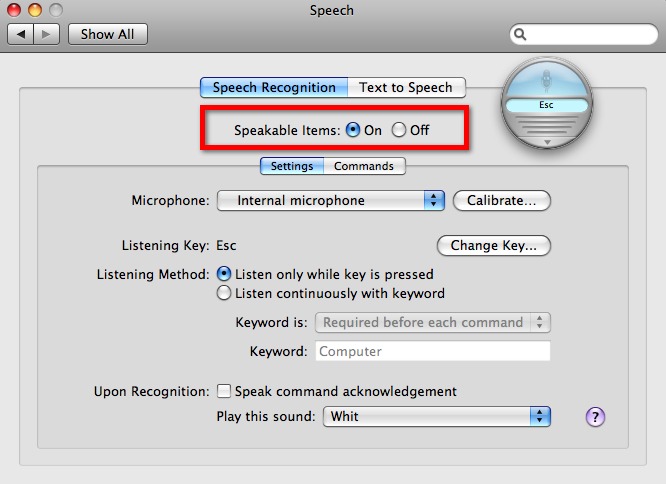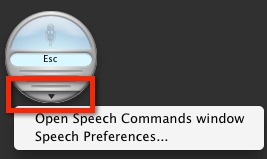Note: Mac key convention: 'Ctrl' is used for 'Control', 'Apple' is used for 'Command' and 'Alt' is used for the 'Option' key.
Note: For keyboard access, make sure 'Full keyboard access' is turned on - you can turn it on or off; by pressing 'Ctrl' '+' 'F1' at any time.
Step 1
- Make sure you are in 'Finder' - press 'Apple' + 'Tab' if necessary to cycle through open applications until you return to 'Finder'.
- Click on the 'Apple ' menu or press 'Ctrl' + 'F2'.
- Click on 'System Preferences...' as shown in Fig 1 or press the down arrow key to highlight it and then press 'Enter'.

Fig 1
Step 2
- Click on the 'Speech' icon or press 'Tab' repeatedly (you might need to press 'Ctrl' + 'F7' first) to cycle through the icons until the 'Speech' icon is highlighted and then press the 'Spacebar'. Fig 2

Fig 2
- Click on the 'Speech Recognition' tab or press 'Ctrl' + 'F7'(once or twice) to highlight one of the and then press the left or right arrow key to select the 'Speech Recognition' tab if it is not already selected.
- Next click the 'On' radio button next to 'Speakable Items': (no keyboard shortcuts). Fig 3

Fig 3
- This will open the Speakable Items window. Fig 4

Fig 4
- To issue a command press and hold the 'Esc' key on your keyboard while speaking.
- 'Speakable items' can recognise a number of commands, they are listed in the 'Speakable Items' folder. To look at them click on the 'Commands' button and click to select ‘Open Speakable Items Folder’
Step 3
- When you are happy with your settings click the 'Close' (red) button at the top of the 'Speech' window or press 'Apple' + 'W' to close the window and return to the Finder desktop.
Note: If this does not work it could be because your computer settings cannot be changed due to local IT policies - contact your local IT support for further help.
Need some more help?
Call our helpline 0300 180 0028 or email enquiries@abilitynet.org.uk
Need free IT Support at Home?
If you are older or disabled and need IT support at home, you can book a free home visit.